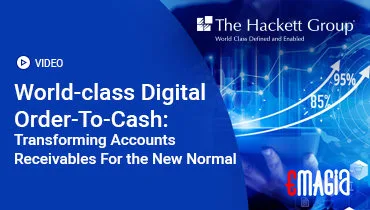In the intricate dance of business-to-business (B2B) transactions, the invoice has long served as the cornerstone of financial exchange. Traditionally, this involved paper documents, manual data entry, and often, slow, cumbersome payment processes. However, in an increasingly digital and interconnected world, the limitations of paper-based invoicing have become glaringly apparent, leading to delays, errors, and significant operational costs. Enter the era of electronic invoice payment, a transformative shift that is fundamentally reshaping how businesses bill, receive, and process payments.
More than just sending a PDF via email, true electronic invoicing involves the structured exchange of invoice data directly between supplier and buyer systems, enabling seamless automation from issuance to payment. This digital revolution promises unprecedented levels of speed, efficiency, accuracy, and compliance, unlocking significant benefits for both accounts receivable and accounts payable departments. This comprehensive guide will delve deep into the world of e-invoicing, exploring its fundamental concepts, diverse methods, tangible advantages, inherent challenges, and the exciting future it portends for global commerce, driven by evolving mandates and technological innovation.
Understanding Electronic Invoice Payment: The Digital Transformation
What is Electronic Invoice Payment? Defining the Digital Shift
What is electronic invoice payment? At its core, it refers to the process where an invoice is created, transmitted, received, and processed digitally, and subsequently, the payment for that invoice is also initiated and completed electronically. While simply sending a PDF via email is a digital step, true electronic invoicing (or e-invoicing) implies a structured, machine-readable data exchange between the sender’s and receiver’s systems, allowing for automated processing. The e invoicing definition emphasizes this structured, automated data flow. It’s about moving beyond paper or simple digital images to fully integrated digital transactions. This is the essence of `what is e invoicing`.
This digital shift streamlines the entire invoice-to-payment lifecycle, reducing manual effort, improving accuracy, and accelerating cash flow for businesses. It’s a fundamental change in how financial transactions are managed. This is the core `e invoice meaning`.
Electronic Invoicing vs. Traditional Paper Invoicing: Key Differences
The distinction between electronic invoicing vs. traditional paper invoicing highlights the transformative power of digital.
| Feature | Traditional Paper Invoicing | Electronic Invoicing (E-Invoicing) |
|---|---|---|
| Format | Physical paper document | Structured, machine-readable digital data (e.g., XML, EDI) |
| Transmission | Mail, fax, courier | Secure networks, portals, direct system-to-system |
| Processing | Manual data entry, scanning, physical storage | Automated data capture, matching, workflow |
| Cost | High (printing, postage, labor, storage) | Lower (reduced manual effort, paperless) |
| Speed | Slow (mail delays, manual processing) | Fast (near real-time transmission and processing) |
| Accuracy | Prone to human error in data entry | High (automated data transfer, fewer errors) |
| Compliance | Manual checks, audit trails | Automated validation, secure audit trails |
This comparison clearly illustrates why electronic invoicing is superior for modern businesses. It’s a fundamental shift from `invoices are attached` physically to digital data exchange.
The E-Invoicing Ecosystem: Networks and Standards
The e-invoicing ecosystem is built upon various networks and standards that enable seamless data exchange. It’s not just about two companies sending files; it’s about interoperability.
- E-Invoicing Networks: Secure platforms that facilitate the exchange of electronic invoices between buyers and suppliers, often acting as intermediaries.
- Data Standards: Agreed-upon formats for invoice data (e.g., UBL, CII, EDIFACT, PEPPOL) that ensure different systems can “understand” each other’s invoices.
- Interoperability: The ability for different e-invoicing systems and networks to communicate and exchange data seamlessly.
Understanding this ecosystem is key to grasping `what is e invoicing` beyond a simple digital file. It ensures that `electronic invoices` can be processed automatically across diverse systems.
Types of Electronic Invoices: From PDF to Structured Data
It’s important to distinguish between different types of electronic invoices:
- PDF Invoices: While digital, a PDF is essentially a digital image of a paper invoice. It requires manual data entry or OCR (Optical Character Recognition) for processing, limiting automation.
- Structured Data Invoices (True E-Invoices): These are machine-readable files (e.g., XML, EDIFACT, UBL) that contain invoice data in a structured format. They can be directly imported and processed by accounting systems without human intervention. This is what `what is an e-invoice` truly refers to.
- Web Invoices: Invoices presented through a web portal where the buyer can view details and initiate payment.
While all are “electronic,” only structured data invoices enable true end-to-end automation and deliver the full `benefits of electronic invoicing`.
The E-Invoicing Process: From Sending to Payment
Sending E-Invoices: Creation and Transmission
The process of sending e-invoices involves several steps, from creation to secure transmission.
- Invoice Creation: The supplier creates the invoice data within their ERP or accounting system.
- Data Transformation: The system converts the invoice data into a structured electronic format (e.g., XML, EDI).
- Validation: The invoice is validated against relevant standards and legal requirements (e.g., `Verifactu` for Spain, PEPPOL for EU mandates).
- Transmission: The electronic invoice is sent via a secure network, e-invoicing platform, or direct system-to-system connection to the buyer’s system.
This entire `e invoicing process` is designed to be automated, ensuring speed, accuracy, and compliance. This is how `sending e invoices` works in a modern context.
Electronic Invoicing System: The Core Infrastructure
An electronic invoicing system is the core infrastructure that enables the creation, transmission, and reception of e-invoices. This system can be a standalone solution, a module within an ERP system, or a service provided by a third-party vendor. Key functionalities include:
- Invoice data generation and formatting.
- Validation against compliance rules.
- Secure transmission capabilities.
- Integration with other financial systems (e.g., Accounts Receivable, Accounts Payable).
A robust `e-invoicing system` is essential for businesses looking to fully embrace `digital invoicing` and streamline their billing operations. This is the backbone of `electronic invoice processing`.
Receiving and Processing Electronic Invoices: Automation in AP
For the buyer, receiving and processing electronic invoices is where significant efficiency gains are realized, particularly in the Accounts Payable (AP) department.
- Automated Receipt: The buyer’s system automatically receives the structured electronic invoice data from the e-invoicing network or supplier.
- Automated Data Capture: The data is immediately captured and populated into the AP system, eliminating manual data entry.
- Automated Matching: The system automatically matches the invoice data against purchase orders (POs) and goods receipts.
- Automated Workflow: Invoices are automatically routed for approval based on predefined rules.
This automation drastically reduces processing time, minimizes errors, and accelerates the entire procure-to-pay cycle. This is the essence of `electronic invoice processing` from the buyer’s side.
Electronic Invoice Management: Streamlining Accounts Payable
Electronic invoice management refers to the comprehensive process of handling invoices digitally from receipt to payment. This includes:
- Automated invoice capture and data extraction.
- Intelligent routing for approvals.
- Automated matching with purchase orders and goods receipts.
- Integration with ERP systems for seamless posting.
- Reporting and analytics on invoice processing times and costs.
Effective `e invoice management` streamlines the entire Accounts Payable workflow, leading to faster processing, reduced costs, and improved financial control. This is a key `e invoicing solution` for AP departments.
Electronic Invoice Payment: Completing the Digital Cycle
The final step in the digital cycle is electronic invoice payment. Once an electronic invoice has been received, processed, and approved, the payment itself is initiated and executed electronically, completing the end-to-end digital transaction. This eliminates the need for manual check printing, mailing, or bank visits. This is the culmination of the `e invoicing process`.
Integrated Payment Methods: ACH, Wire, Card
Electronic invoice payment typically leverages integrated payment methods such as:
- ACH (Automated Clearing House): Electronic funds transfers directly between bank accounts. Cost-effective and widely used for B2B payments.
- Wire Transfers: Faster electronic transfers, often used for large amounts or international payments.
- Credit Card Payments: Processed through secure payment gateways, offering convenience but often higher fees.
- Virtual Cards: Single-use credit card numbers for enhanced security.
Integration of these payment methods directly within the `e invoicing system` or associated payment portals ensures a seamless transition from invoice approval to payment execution. This is the core of `e invoice payment` functionality.
Payment Remittance and Reconciliation: Automated Matching
A key advantage of electronic invoice payment is the ability to automate payment remittance and reconciliation. When payments are made electronically, the remittance information (details of which invoices are being paid) can be transmitted along with the payment in a structured format (e.g., EDI 820). This enables:
- Automated Cash Application: The receiving company’s system can automatically match the incoming payment to the correct invoices.
- Faster Reconciliation: Reduces manual effort in bank and `accounts receivable` reconciliation.
- Reduced Unapplied Cash: Minimizes payments sitting in suspense accounts due to missing remittance.
This seamless flow from `e invoice payment` to reconciliation drastically improves `cash application efficiency` and financial accuracy. This is a significant `e invoicing benefit`.
Benefits of Electronic Invoicing and Payment: A Transformative Impact
Enhanced Efficiency and Cost Savings: Beyond Paperless
One of the most compelling benefits of electronic invoicing and payment is the enhanced efficiency and cost savings it delivers. This goes far beyond just eliminating paper.
- Reduced Manual Labor: Automating data entry, matching, and approval workflows significantly cuts down on human effort.
- Lower Operational Costs: Eliminates expenses related to printing, postage, filing, and physical storage.
- Faster Processing Cycles: Invoices are processed and paid much quicker, reducing Days Payable Outstanding (DPO) for buyers and Days Sales Outstanding (DSO) for sellers.
- Fewer Errors: Automated data transfer minimizes human error, leading to fewer discrepancies and disputes.
These efficiencies translate directly into substantial cost savings and improved productivity across both Accounts Payable and Accounts Receivable departments. This is a core `e invoicing benefit`.
Improved Accuracy and Reduced Errors: Data Integrity
Electronic invoicing and payment significantly contribute to improved accuracy and reduced errors. By transmitting invoice data in a structured, machine-readable format, the risk of manual data entry errors is virtually eliminated. This leads to:
- Fewer Discrepancies: Invoices match purchase orders and goods receipts more reliably.
- Accurate Financial Records: Ensures that `accounts payable` and `accounts receivable` ledgers are precise.
- Streamlined Reconciliation: Automated matching of invoices to payments reduces reconciliation headaches.
This enhanced data integrity means more reliable financial reporting and fewer costly mistakes, making it a key advantage of `electronic invoicing systems`.
Faster Cash Flow and Working Capital Optimization: Liquidity Gains
For suppliers, electronic invoice payment directly leads to faster cash flow and working capital optimization.
- Reduced DSO: Invoices are delivered and processed faster, leading to quicker payments and a lower Days Sales Outstanding.
- Improved Liquidity: Faster cash conversion means more liquid funds available for operations, investments, or debt reduction.
- Early Payment Discounts: Buyers are more likely to take advantage of early payment discounts when processing is fast, benefiting both parties.
This acceleration of cash inflow is a significant financial advantage, making `e invoice payment` a strategic imperative for `cash flow management`. This is a crucial `e invoicing benefit` for liquidity.
Enhanced Compliance and Audit Readiness: Transparency and Control
Electronic invoicing and payment offer enhanced compliance and audit readiness.
- Automated Validation: Systems can automatically validate invoices against regulatory requirements and internal policies.
- Secure Audit Trails: Digital records provide clear, tamper-proof audit trails of every step in the invoice lifecycle.
- Reduced Fraud Risk: Automated matching and approval workflows make it harder for fraudulent invoices to slip through.
This increased transparency and control ensure adherence to regulatory mandates (e.g., `e-invoicing mandates` in Europe) and simplify the audit process, reducing risk and ensuring `electronic invoice processing` is secure. This is a key benefit of `electronic invoicing and payment`.
Improved Supplier and Customer Relationships: Seamless Interactions
By streamlining the invoicing and payment process, electronic invoicing leads to improved supplier and customer relationships.
- For Customers (Buyers): Faster processing, fewer errors, and easier payment options lead to greater satisfaction.
- For Suppliers (Sellers): Faster payments, fewer disputes, and reduced collection efforts lead to stronger relationships.
Seamless, efficient interactions foster trust and loyalty, turning a traditionally administrative process into a positive touchpoint for `b2b invoicing`. This is a significant, often overlooked, `e invoicing benefit`.
Environmental Benefits: Reduced Paper Consumption
Beyond the financial and operational advantages, electronic invoicing offers tangible environmental benefits by significantly reducing paper consumption. This contributes to a company’s sustainability goals and reduces its carbon footprint. While not the primary driver for adoption, it’s a positive externality of the shift to `digital invoices`.
Challenges and Considerations in Adopting Electronic Invoice Payment
Initial Implementation Costs and Complexity: The Upfront Investment
One of the primary challenges in adopting electronic invoice payment is the initial implementation costs and complexity. Setting up an `electronic invoicing system` requires an upfront investment in software, integration with existing ERP/accounting systems, and potential data migration. The complexity can also involve training staff, adapting internal processes, and ensuring compliance with various standards and mandates. This initial hurdle can be significant, especially for smaller businesses. This is a common concern for `einvoicing solution` adoption.
Integration with Existing Systems: Data Silos and Legacy Systems
A major technical challenge is integration with existing systems. Many businesses operate with disparate `data silos` and legacy systems that may not easily communicate with modern `e-invoicing platforms`. Achieving seamless data flow between invoicing, `accounts receivable`, `accounts payable`, and ERP systems can be complex and require significant IT resources. This lack of interoperability can hinder the full realization of `electronic invoice processing` benefits. This is a key challenge for `electronic invoicing solutions`.
Supplier and Customer Adoption: Network Effects
The success of electronic invoicing relies heavily on supplier and customer adoption. For a network effect to take hold, both parties in a transaction need to be on board. Convincing suppliers to send `e-invoices` and customers to receive them can be challenging, especially for smaller partners who may lack the necessary technology or understanding. This requires effective communication, incentives, and sometimes, a phased rollout strategy. This is a common hurdle for `customer e-invoicing` initiatives and `supplier einvoicing solutions`.
Data Security and Privacy Concerns: Protecting Sensitive Information
As financial data is exchanged electronically, data security and privacy concerns are paramount. Businesses must ensure that their `electronic invoicing system` uses robust encryption, secure networks, and strict access controls to protect sensitive invoice and payment information from cyber threats and unauthorized access. Compliance with data privacy regulations (e.g., GDPR) is also critical. This is a major consideration for `electronic invoice management` and `e invoicing service` providers.
Compliance with E-Invoicing Mandates: Navigating Global Regulations
Increasingly, businesses face the challenge of compliance with `e-invoicing mandates`. Many governments worldwide are making `e-invoicing` mandatory for B2B transactions, often to combat tax fraud and improve transparency (e.g., in Europe, Latin America). Navigating these diverse and evolving global regulations, including specific `electronic invoice format` requirements and transmission protocols (like PEPPOL or `Verifactu`), adds complexity for multinational companies. This is a significant driver for `what is e invoicing` adoption, but also a challenge for compliance. This is where `eu electronic invoicing` becomes a critical factor.
Change Management and Training: Adapting Internal Processes
Adopting electronic invoicing requires significant change management and training within the organization. Employees accustomed to manual, paper-based processes need to adapt to new workflows, software, and digital tools. Resistance to change, lack of understanding, or insufficient training can hinder successful implementation and adoption. Effective change management strategies are crucial to ensure a smooth transition and realize the full `e invoicing benefits`.
The Future of Electronic Invoice Payment: Trends and Outlook
Global E-Invoicing Mandates: A Growing Trend
The trend of global `e-invoicing mandates` is rapidly accelerating. Governments worldwide are increasingly recognizing the benefits of `e-invoicing` for tax compliance, fraud prevention, and economic transparency. This means more countries will implement mandatory `e-invoicing` for B2B transactions, expanding beyond current regions like Latin America and parts of Europe. This growing regulatory push will be a primary driver for the widespread adoption of `electronic invoicing solutions` globally. This is a key aspect of `what is e invoicing` in the future.
Interoperability and Network Expansion: Seamless Global Exchange
The future will see continued focus on interoperability and network expansion in `e-invoicing`. Efforts like PEPPOL (Pan-European Public Procurement Online) aim to create seamless, cross-border `e-invoicing` networks, allowing businesses to exchange `electronic invoices` with partners anywhere in the world, regardless of their local `e-invoicing system`. This will reduce fragmentation and make `electronic invoice payment` truly global and frictionless. This is a crucial development for `einvoice connect`.
AI and Automation in Invoice Processing: Intelligent Workflows
The integration of AI and automation in invoice processing will become even more sophisticated. AI and Machine Learning will enhance `electronic invoice management` by:
- Intelligent Data Extraction: Automatically extracting data from even unstructured invoice formats (e.g., PDFs from non-e-invoicing partners).
- Predictive Matching: Using AI to achieve higher auto-match rates for invoices against POs and goods receipts.
- Automated Dispute Resolution: Identifying and even initiating resolution for common invoice discrepancies.
- Smart Workflows: Dynamically routing invoices for approval based on context and historical patterns.
This will lead to truly intelligent, touchless `electronic invoice processing`, further boosting efficiency and accuracy. This is the cutting edge of `e invoice management`.
Blockchain for Invoice Integrity and Transparency (Brief Mention)
While still emerging, blockchain technology holds potential for enhancing invoice integrity and transparency in `electronic invoice payment`. Blockchain’s immutable ledger could provide a highly secure and verifiable record of invoice creation, transmission, and payment, further reducing fraud and disputes. Its decentralized nature could also facilitate trustless transactions between parties. While not mainstream yet, it’s an area of `e invoicing solution` innovation.
Real-time Invoicing and Payments: Accelerating the Cash Cycle
The ultimate goal for electronic invoice payment is real-time invoicing and payments. This vision involves invoices being generated and transmitted instantly upon sale, and payments being initiated and settled almost immediately. This would drastically accelerate the cash cycle for businesses, providing unprecedented liquidity and `cash flow visibility`. This shift towards `real-time payments` will be driven by advancements in `e-invoicing systems` and payment infrastructure, transforming the entire `invoicing solution` landscape.
Emagia: Powering Seamless Electronic Invoice Payment for Accelerated Cash Flow
In the evolving landscape of global commerce, the shift to electronic invoice payment is no longer a luxury but a strategic imperative. Emagia understands that true efficiency and accelerated cash flow stem from a seamless, end-to-end digital invoicing and payment process, free from the bottlenecks of manual intervention. Our AI-powered platform is specifically designed to revolutionize your entire Order-to-Cash (O2C) cycle, ensuring that your `e-invoicing` and payment processes are optimized for speed, accuracy, and compliance.
Emagia’s intelligent automation capabilities streamline the creation, transmission, and processing of `electronic invoices`. We enable businesses to effortlessly send and receive `e-invoices` in various structured formats, ensuring interoperability with diverse buyer and supplier systems. Our advanced AI and Machine Learning algorithms automate `electronic invoice processing` on the Accounts Payable side, intelligently extracting data, matching invoices to purchase orders, and routing them for approval with unparalleled precision. This drastically reduces manual effort, minimizes errors, and accelerates the entire invoice approval cycle, paving the way for faster `electronic invoice payment`.
Furthermore, Emagia’s robust cash application solution seamlessly integrates with `e-invoicing` to ensure that once payments are initiated electronically, they are accurately matched to the correct invoices, even with complex remittance advice. This eliminates `unapplied cash`, streamlines reconciliation, and provides real-time visibility into your cash position. By offering comprehensive `e invoicing solutions` that span the entire revenue cycle, Emagia empowers businesses to achieve faster cash conversion, enhance compliance with `e-invoicing mandates`, and build stronger, more efficient B2B relationships.
By partnering with Emagia, businesses gain the competitive advantage of truly intelligent `electronic invoice payment`. We transform your invoicing and payment processes from administrative burdens into strategic drivers of financial excellence, ensuring accelerated cash flow, reduced operational costs, and enhanced financial agility in a rapidly digitizing global economy.
FAQs about Electronic Invoice Payment
What is electronic invoice payment?
Electronic invoice payment refers to the process where an invoice is created, transmitted, received, and processed digitally in a structured format, and the corresponding payment is also initiated and completed electronically, enabling automated end-to-end transactions.
What is e-invoicing?
E-invoicing (electronic invoicing) is the structured digital exchange of invoice data directly between a supplier’s and buyer’s systems, allowing for automated processing without manual data entry, unlike simply sending a PDF via email.
What are the benefits of electronic invoicing?
Benefits include enhanced efficiency and cost savings (reduced manual labor, paper, postage), improved accuracy, faster cash flow for suppliers, better working capital optimization for buyers, enhanced compliance, reduced fraud risk, and improved supplier/customer relationships.
Is sending a PDF invoice considered e-invoicing?
While sending a PDF invoice is electronic transmission, it is generally not considered true e-invoicing. True e-invoicing involves the exchange of structured, machine-readable data (e.g., XML, EDI) that can be automatically processed by systems, whereas PDFs often require manual data entry or OCR.
Are electronic invoicing mandates common?
Yes, electronic invoicing mandates are becoming increasingly common globally. Many governments, particularly in Europe and Latin America, are making e-invoicing mandatory for B2B transactions to combat tax fraud, improve transparency, and boost digitalization.
How does electronic invoicing improve cash flow?
Electronic invoicing improves cash flow by accelerating the entire invoice-to-payment cycle. Invoices are delivered and processed faster, leading to quicker approvals and payments from buyers, which reduces Days Sales Outstanding (DSO) for suppliers.
What is an electronic invoicing system?
An electronic invoicing system is a software or platform that enables the creation, transmission, reception, and processing of electronic invoices in a structured format, often integrating with ERP systems and e-invoicing networks to automate the entire workflow.



